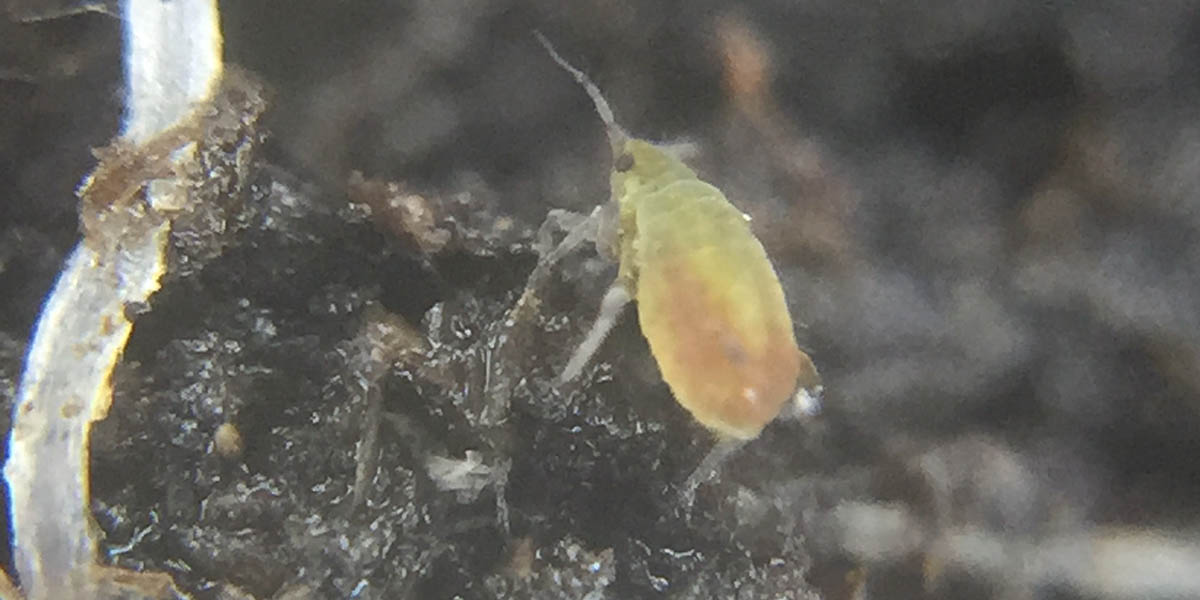Examining the efficacy for two classes of biocontrols on root aphids.
Intro & Overview
This study was conducted by the Cannabis Horticultural Association and examined the efficacy of two different classes of biocontrols for root aphids on cannabis.
- Predatory Nematodes- (Steinernema feltiae) & (Heterorhabditis bacteriophora)
- Myco-insecticide- Beauveria bassiana
This study arose after receiving conflicting information regarding the predatory nematode (Steinernema feltiae) ability for control of root aphids. There are a few companies that have nematodes listed as a control for root aphids. After speaking with an entomologist and agronomist and looking further into the research, it turned out a few highly reputable insectaries did not have nematodes listed for root aphid control. So a microscope study was set up to examine how 2 different nematodes, Steinernema feltiae and Heterorhabditis bacteriophora, interact with root aphids. Juvenile and adult root aphids were tested and observed under above average populations of nematodes. Then the biological control was introduced to observe its efficacy of the nematodes on injured root aphids. The methods, results and discussion will be reviewed.
Study 1 – Predatory Nematodes
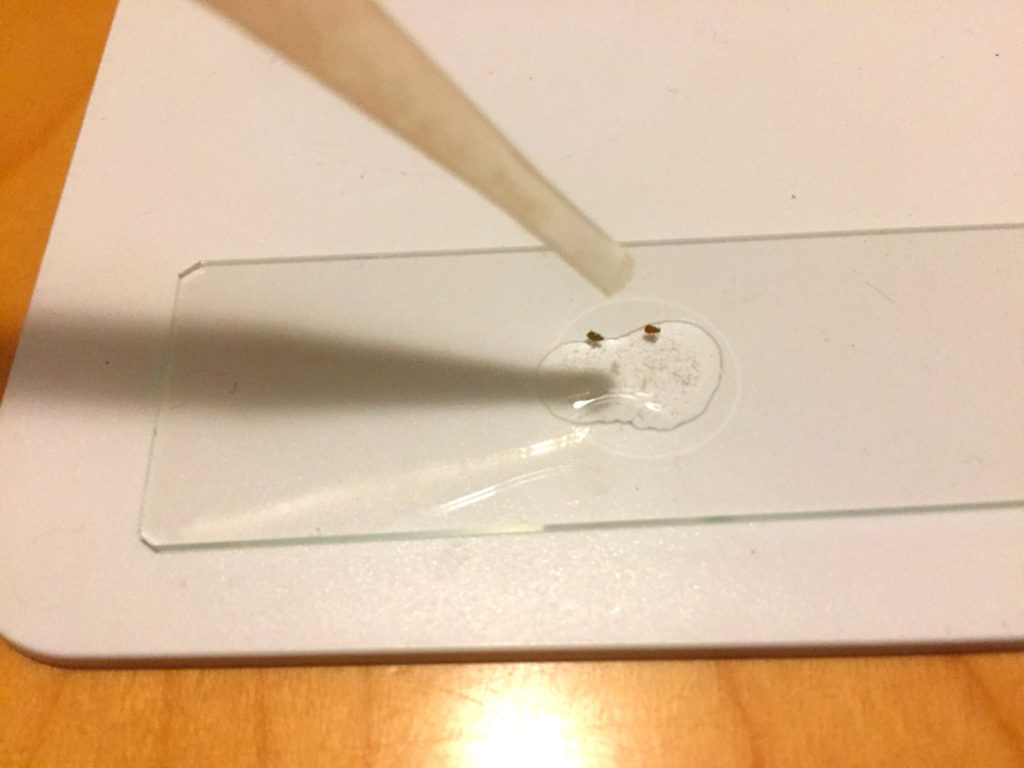

Materials and Methods
Steinernema feltiae and Heterorhabditis bacteriophora were ordered from a reputable Insectary. Both packs were inspected upon arrival and sampled to determine if the nematodes were alive. This was confirmed through microscope observation.
For Study 1, root aphids were observed on a local farm on a select few plants with small populations of root aphids colonizing on the base of the pots. The root aphids were examined under an OMAX microscope. The slides were then populated with nematodes and several root aphids, ranging from juveniles to adults. The aphids were left on the slide over the course of 3 hours to examine the interaction between the nematodes and the root aphids.
Results
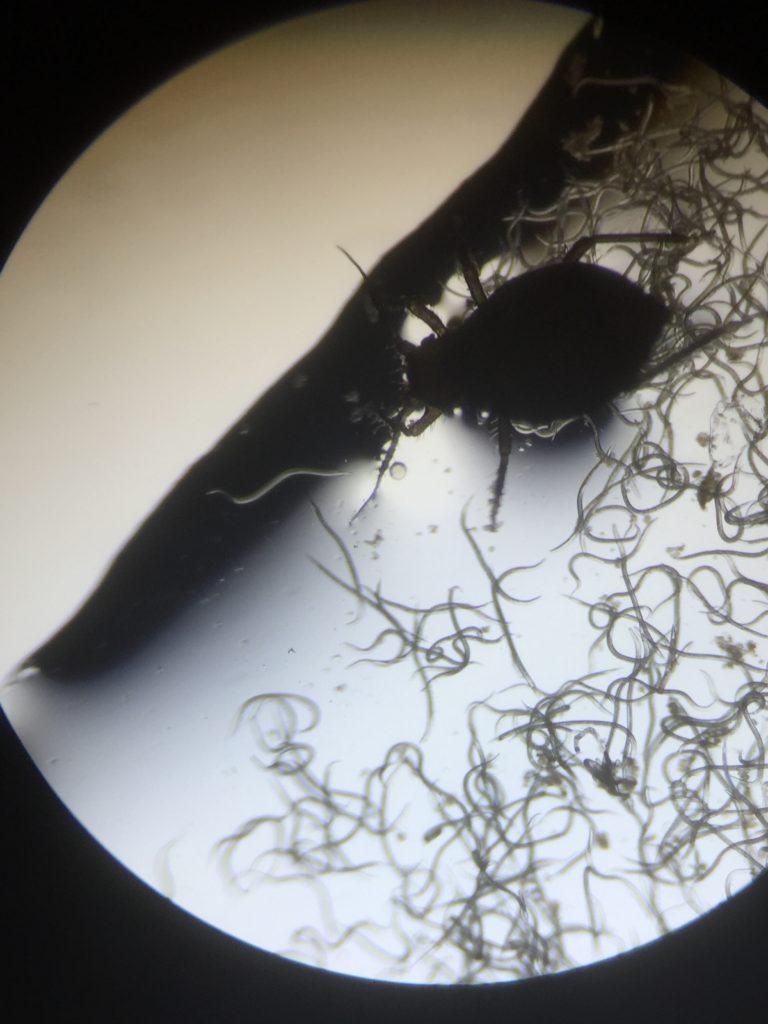



The initial results of Study 1 was the nematodes were not able to penetrate the exoskeleton of the root aphids. The nematodes were observed to swarm the bodies, but the aphids were very adept at kicking, spinning and rubbing their legs together to remove the nematodes from latching on. The aphids were periodically nudged back towards the high density populations of the nematodes to attempt to view exoskeleton penetration. Over the course of a 3 hour observation, neither the Steinernema feltiae nor the Heterorhabditis bacteriophora nematodes were able to penetrate into a root aphid. At the end of the 3 hour observation time, a needle was used to rupture the thorax of a root aphid. At that time, the nematodes engulfed the root aphid and were observed penetrating at multiple locations.
Discussion
For Study 1, the inefficiency of nematodes as standalone control for root aphids became very clear. The root aphids were able to “shake off” the nematodes by kicking their legs and spinning. Although root aphids are generally considered to move very slowly, this rapid spring loaded body motion helped them remove the nematodes off their appendages. It should be noted however, that these were artificial conditions where the root aphids and nematodes were suspended in water. It is unknown whether or not the nematodes predatory skills function better in a soil aggregate, considering they might have something to push off of to penetrate.
Study 2 – Microbial Insecticide (Beauveria bassiana)
Materials and Methods
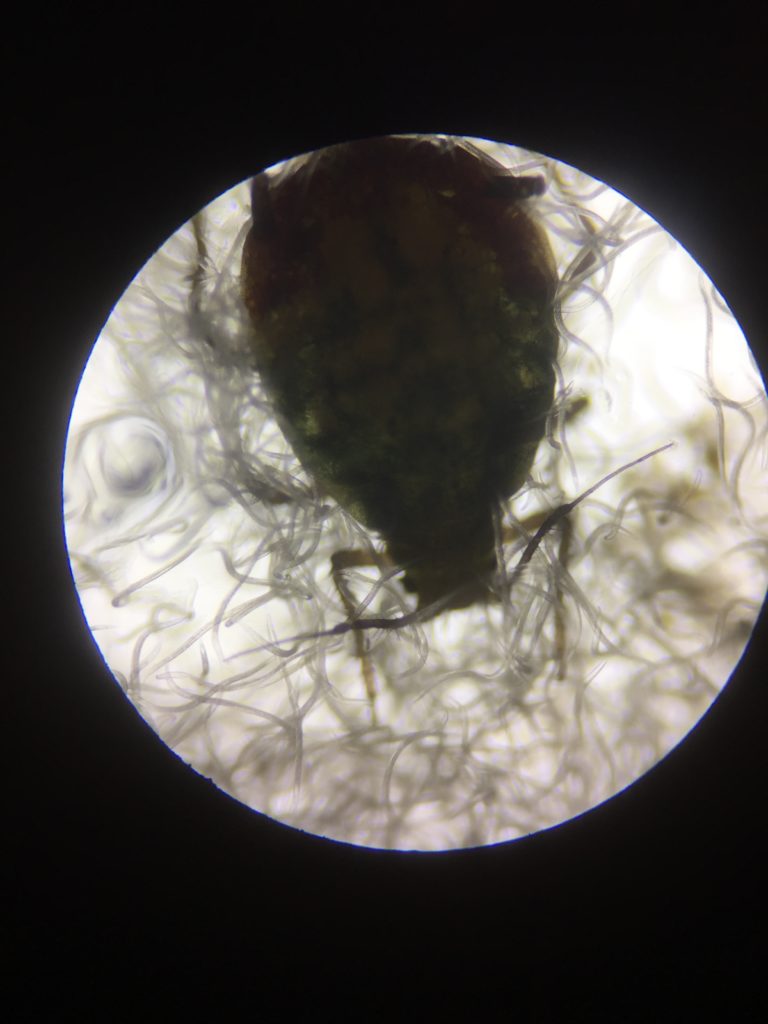

Beauveria bassiana (Mycotrol WPO) was purchased from a reputable dealer with proper environmental controls in place to preserve the quality of the spores. Root aphids were collected from a nearby farm with a few plants containing small populations of root aphids. The test was run on 4” pots and 3 gallon pots. Those pots were inoculated by drenching with Beauveria bassiana at a higher rate of 0.5oz (15ml) per gallon. The pots were quarantined in a small greenhouse with concrete floors and trays to capture any runoff. The 4” pots were dunked in solution and drenched to the point of 100% media saturation with the Beauveria bassiana. The 3 gallon pots were hand watered and every attempt was made to achieve 100% saturation but due to the complexities of soil structure and methodologies, not all pore space was saturated. The pots were left to sit for 5 days, being spot watered as needed, ensuring the soil medium never dried out. After the allotted 5 day period, the pots were examined and root aphids were collected and populated with the predatory nematodes following the exact same procedures from Study 1.
Results
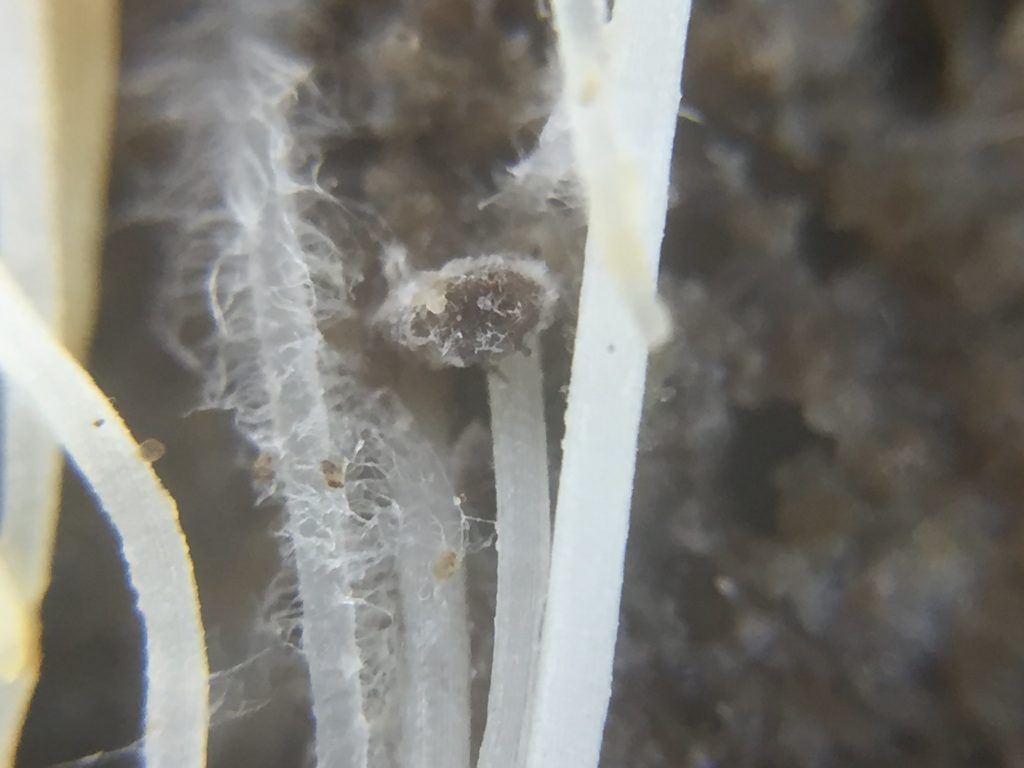

The results of this study indicated a decently high mortality rate (50+%) of the root aphids that were infected by Beauveria bassiana. This is a general estimate of the observed populations but not an exact number. Many of the root aphids that were not killed appeared to have had their defense systems weakened.
Over a few hour time period of being exposed to nematodes on the slide, the nematodes were observed able to overtake the root aphids and penetrate their exoskeleton. The Beauveria bassiana did not have a 100% mortality rate and the aphids that appeared healthy were able to defend against the attacking nematodes.
Discussion
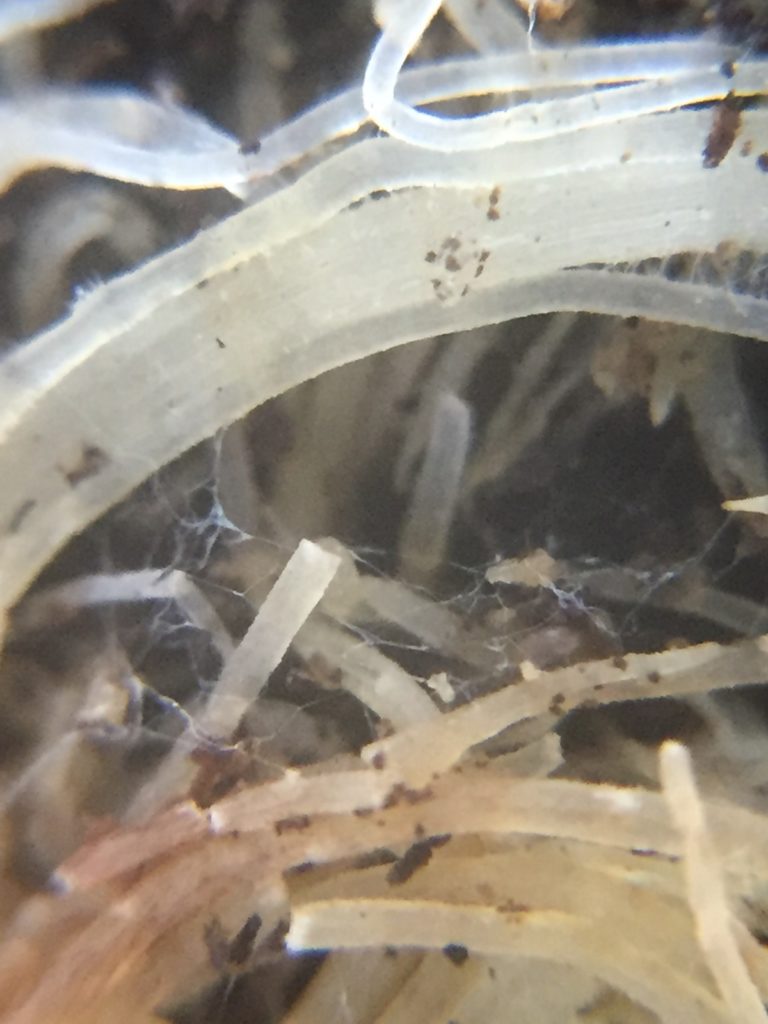

Study 2 showed the most significant advancement towards effective IPM methodologies for combatting root aphids, with a multi-tiered approach with microbial insecticides followed by an application of predatory nematodes. First one would inoculate with a biological control such as Beauveria bassiana, waiting between 2-5 days before applying predatory nematodes. Then this cycle should be repeated for a few weeks with heavy scouting to ensure that the reduction of aphid populations is occurring. It is highly important to find reputable dealers that understand the sensitive nature of this biological pesticide and ensure you are paying for live spores. Proper storage in a cool, dry place. Avoid storage below freezing temperatures or above 85°F. The stability of the spores decreases with time at temperatures above 85°F. Keeping the container sealed and preventing cross contamination with water or other products will help in ensuring its efficacy.
Article by:
Russell Pace III – President of the Cannabis Horticultural Association

